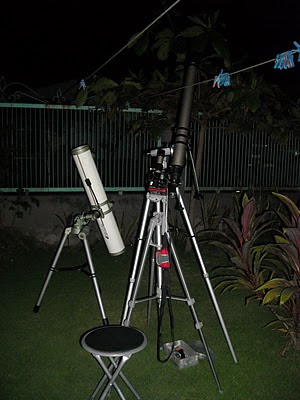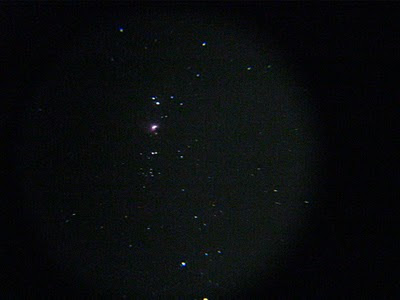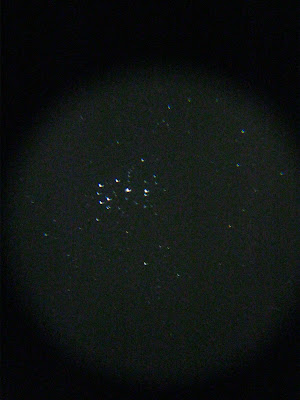However, as Newton said, for every action, there is an equal and opposite reaction. And in this case, I did not want to sleep without getting good astrophotos. This is where the finderscope gets in. Since the finderscope is a low power scope with a wide field, I wont have much trouble adjusting since it does not magnify the subject and its movement. Thus, finderscope astrophotography was born. For these photos, I am using my new Canon A495 digital camera (a Christmas gift from Maureen Santos) mounted on a generic camera tripod and my 6x30 finderscope which is of excellent quality.
 |
| Here was my setup for the night. |
I brought out my two telescopes to be able to do a comparison but it was such a hassle to use my two primary telescopes because I had to adjust them from time to time manually which led to blurred photos. However, I must note that my two primary telescopes are very good performers. Its just that I do not have the proper camera adaptor and motor drive to move up to the next level of astrophotography - deep sky astrophotography.
 |
| Finderscope Astrophotography Setup |
 |
| Finderscope Astrophotography Setup |
 |
| Finderscope Astrophotography Setup |
This setup may look simple but I was surprised with the results. Sadly, I am having troubles with image processing at the moment so I will instead post the individual images that I took during the night for your reference. All photos were again, taken with a Canon Powershot A495 Digital Camera at ISO 400, exposure times : 8 seconds or 10 seconds (yes, my camera does allow long exposures but not control of aperture - you can check out the specifications on the internet).
Here are the photos of the Orion nebula as seen through the finderscope's rich field of view. All images are unedited and are JPEGs straight from the camera.
And here are photos of the Pleiades star cluster. Again, the finderscope's rich field of view positions the Pleiades perfectly. All images are unedited and are JPEGs straight from the camera.
And finally to top everything off, a picture of myself doing what I love during the night!
Equipment does matter sometimes but if you have passion and a bit of imagination, you can do something with very very limited equipment - even a 6x30 finderscope which I'm sure is underestimated by the majority of people. Its not about equipment - its about you and how you find a way to do things.

























Nice job bro... happend to come across your site while researching about astronomy in our country... keep it up!
ReplyDeletevery Nice Setup Marvin :)
ReplyDelete